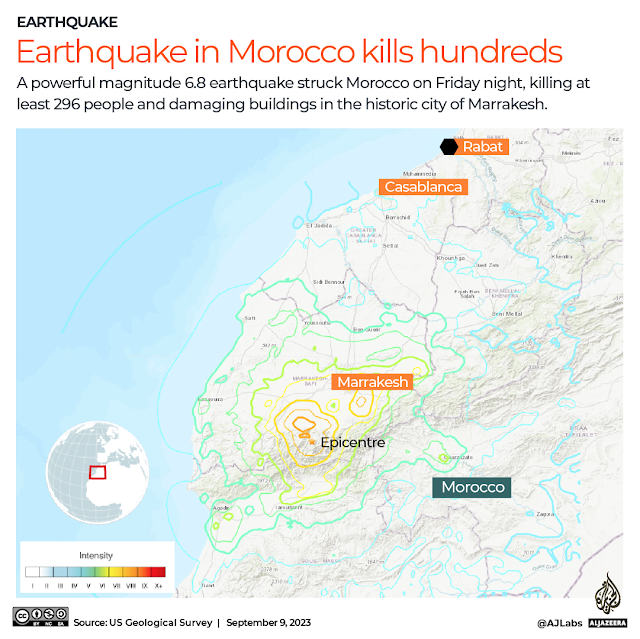On Friday night, September 8, a powerful earthquake rocked Morocco, killing hundreds of people and destroying buildings and villages. The quake, which had a magnitude of 6.8, was felt across the North African country, especially in Marrakech and the surrounding provinces.
The quake struck at 11:11 p.m. local time (2211 GMT), followed by a 4.9-magnitude aftershock 19 minutes later. The epicenter was near the town of Ighil in Al Haouz Province, about 70 kilometers (43.5 miles) south of Marrakech. According to Morocco’s seismic agency, the quake was shallow, only 11 kilometers (7 miles) below the surface, making it more dangerous.
The earthquake caused widespread panic and damage, as shown by videos and images on Moroccan television and social media. Many people stayed outside their homes, fearing more aftershocks. Some of the most affected areas were the historic sites of Marrakech, a UNESCO World Heritage city.
The quake damaged parts of the famous red walls that surround the old city, as well as the 12th-century Koutoubia Mosque, one of the city’s major landmarks. The mosque’s minaret, which is visible from miles away, reportedly suffered cracks and fissures.
Other videos showed collapsed buildings, cars buried under rubble, and people running and screaming in the streets. The quake also destroyed many homes and villages in rural areas, where people live in mud-brick houses that are vulnerable to seismic shocks.
Morocco’s Interior Ministry said that at least 296 people had died and 153 people had been injured by the quake. The ministry also said that it was mobilizing rescue teams and emergency supplies to help the victims.
The United Nations expressed its condolences and solidarity with Morocco and said that it was ready to assist the government in its relief efforts.
The earthquake was the deadliest in Morocco since 2004 when a 6.3-magnitude quake killed about 600 people in the northern city of Al Hoceima. Morocco lies on a major fault line that separates the African and Eurasian tectonic plates, making it prone to seismic activity.







0 Comments